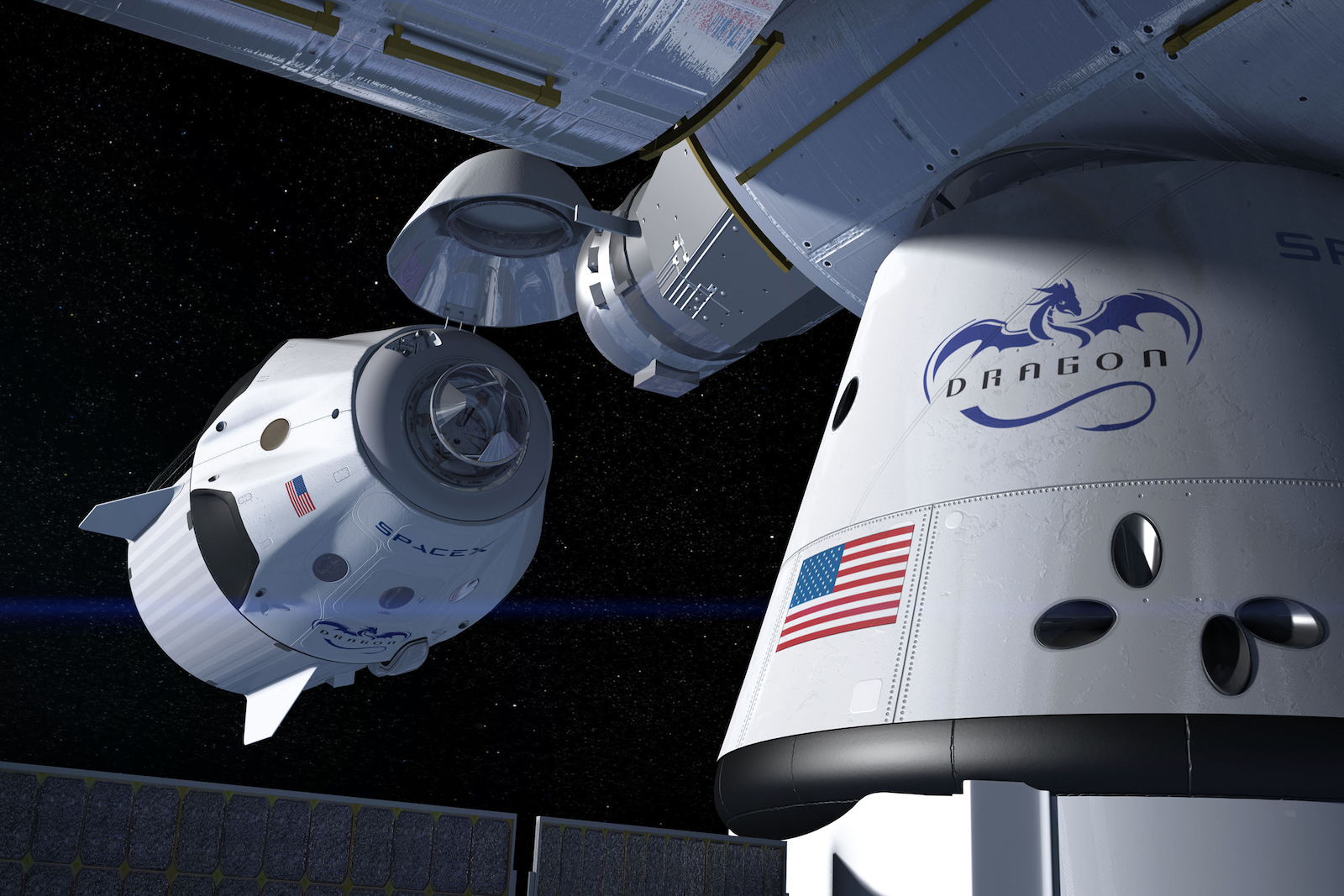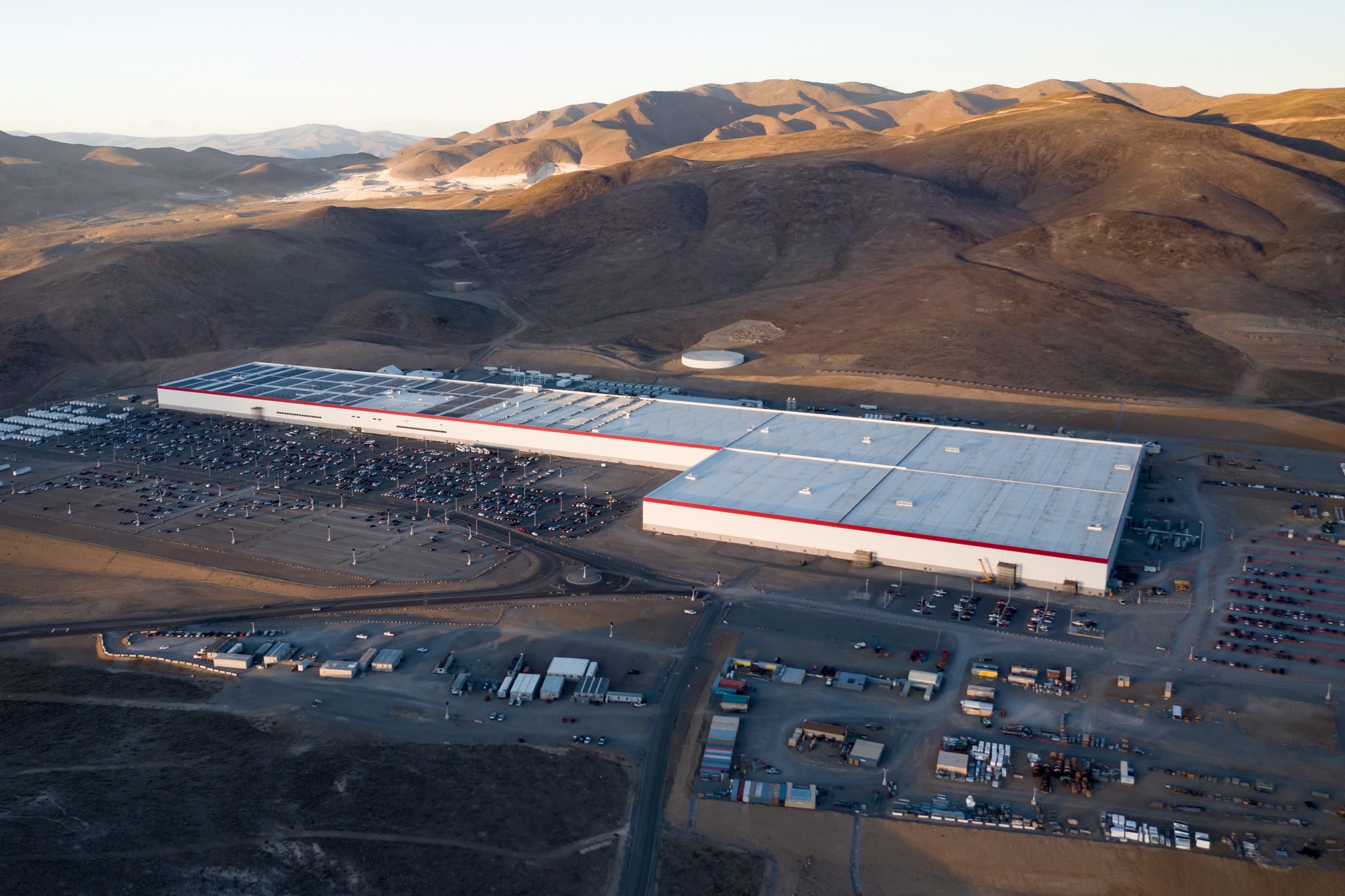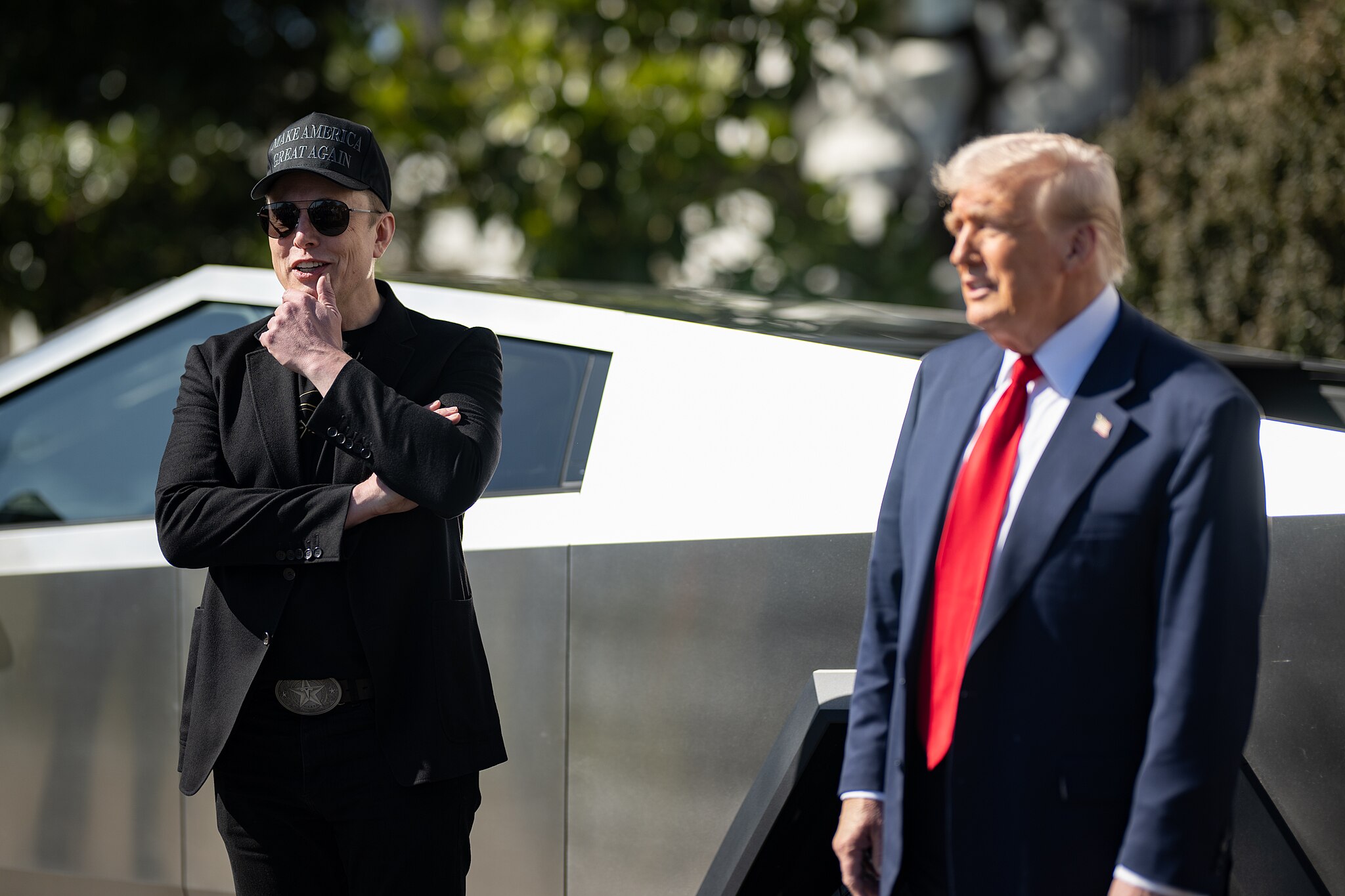News
SpaceX and “new space” up against traditionalists for future of NASA

Speculation about the direction of NASA under the Trump Administration has been circling for weeks, and although there are still no definite answers, there’s finally some news about the process being executed.
According to internal White House advisory documents obtained by Politico, there’s a huge push from many advisors for NASA to be used as a driver for privatized space technology; however, that push is bringing the rift between traditional NASA contractors and the “new space” companies like SpaceX and Blue Origin to a head. NASA’s $19 billion dollar budget is simply not large enough to accommodate both commercially-driven and traditional visions for the agency. The struggle is real, apparently, and it isn’t just affecting inner White House circles, either.
Earlier this week, the Commercial Spaceflight Federation (CSF) surprised its audience by endorsing NASA’s Space Launch System (SLS), the heavy lift rocket being built to launch future NASA missions. In his remarks at the FAA’s Commercial Space Conference, CSF chairman Alan Stern characterized the SLS as a “resource” that could be complimentary to commercial space activity.
The surprise at this announcement comes in part from the fact that Boeing, a traditional NASA contractor and one-half of the government-customer-only launch service United Launch Alliance (ULA), is the prime contractor for the SLS. The cost comparison between private and government contracted technology is the issue.
Cost Effectiveness is Key
The billions of dollars it will take to fully develop SLS plus the high cost of launch missions is hard to justify when, for example, SpaceX estimates under $100 million dollars per flight on its upcoming heavy launch vehicle, Falcon Heavy.
SLS is estimated to be capable of carrying many times the payload weight of SpaceX’s vehicle, but it would still cost much less to use multiple SpaceX vehicles for a multi-part payload rather than justify the huge cost for a single launch. That, or one could argue that the cost of a SpaceX or Blue Origin developed vehicle in line with the SLS’s capabilities would be much more cost effective given the pricing record thus far. It also should be noted that such vehicles are, in fact, being designed by these companies already, albeit mostly still in non-tangible state. SpaceX has its Mars-bound Interplanetary Transport System (or “BFR” if you like), and Blue Origin has its “New Armstrong” in the works.
What about Congress?
The push from White House advisers will face obstacles in Congress as well. Space subcommittee members in both the House and Senate have discussed some of the details included in a draft 2017 NASA Authorization Act, the legislation which will define NASA’s priorities, and considering their comments alongside prior legislative drafts, “stay the course” looks to be the general direction. Concern over NASA’s need for “constancy of purpose” is a big driver, as missions requiring long-term development suffer when directives vary too widely from one presidential administration to another.
While prior presentations of NASA Authorization Acts have been lengthy and mostly inviting little to no controversy, they all still contain a requirement to use the SLS and Orion, NASA’s crew capsule under development, for deep space activity and anywhere else suitable. Such emphasis would likely clash with those advocating for transforming NASA’s role to one supporting commercial launch vehicles, especially those promoting the elimination of the SLS entirely.
Also, with thousands of NASA-dependent jobs on the line in the districts hosting SLS development facilities, the stakes are high for any congressional representatives thinking of supporting major shifts for NASA. The lines seem to have been drawn in the proverbial sand.
What about Mars?
News of commercial space supporters advocating for a NASA transition inside the White House may sound hopeful to those rooting for more privatized space technology; however, for colonization dreamers, Mars looks to be a carrot teased at the end of a “Moon first” road. The internal White House documents call for Moon development to begin by 2020, Mars falling under the “and beyond” category of capabilities that could be possible with an overhauled NASA.
In that light, the proposed NASA bills might sound like a Cinderella story for Mars enthusiasts: In order to go to the Prince’s ball (Mars), a whole host of lengthy chores (cis-lunar activity, Moon base, use the SLS, etc.) must be completed first.
If “Moon first” becomes the winner in the end, it still wouldn’t likely interfere with Elon Musk’s Mars plans but rather help them along with all the new space infrastructure launch income for SpaceX. And to continue with the Cinderella bit, we know there’s no way Musk would make it home by midnight anyway, although he does seem to have an affinity for mice.
Elon Musk
Tesla reveals it is using AI to make factories more sustainable: here’s how
Tesla is using AI in its Gigafactory Nevada factory to improve HVAC efficiency.

Tesla has revealed in its Extended Impact Report for 2024 that it is using Artificial Intelligence (AI) to enable its factories to be more sustainable. One example it used was its achievement of managing “the majority of the HVAC infrastructure at Gigafactory Nevada is now AI-controlled” last year.
In a commitment to becoming more efficient and making its production as eco-friendly as possible, Tesla has been working for years to find solutions to reduce energy consumption in its factories.
For example, in 2023, Tesla implemented optimization controls in the plastics and paint shops located at Gigafactory Texas, which increased the efficiency of natural gas consumption. Tesla plans to phase out natural gas use across its factories eventually, but for now, it prioritizes work to reduce emissions from that energy source specifically.
It also uses Hygrometric Control Logic for Air Handling Units at Giafactory Berlin, resulting in 17,000 MWh in energy savings each year. At Gigafactory Nevada, Tesla saves 9.5 GWh of energy through the use of N-Methylpyrrolidone refineries when extracting critical raw material.
Perhaps the most interesting way Tesla is conserving energy is through the use of AI at Gigafactory Nevada, as it describes its use of AI to reduce energy demand:
“In 2023, AI Control for HVAC was expanded from Nevada and Texas to now include our Berlin-Brandenburg and Fremont factories. AI Control policy enables HVAC systems within each factory to work together to process sensor data, model factory dynamics, and apply control actions that safely minimize the energy required to support production. In 2024, this system achieved two milestones: the majority of HVAC infrastructure at Gigafactory Nevada is now AI-controlled, reducing fan and thermal energy demand; and the AI algorithm was extended to manage entire chiller plants, creating a closed-loop control system that optimizes both chilled water consumption and the energy required for its generation, all while maintaining factory conditions.”
Tesla utilizes AI Control “primarily on systems that heat or cool critical factory production spaces and equipment.” AI Control communicates with the preexisting standard control logic of each system, and any issues can be resolved by quickly reverting back to standard control. There were none in 2024.
Tesla says that it is utilizing AI to drive impact at its factories, and it has proven to be a valuable tool in reducing energy consumption at one of its facilities.
Elon Musk
Tesla analysts believe Musk and Trump feud will pass
Tesla CEO Elon Musk and U.S. President Donald Trump’s feud shall pass, several bulls say.

Tesla analysts are breaking down the current feud between CEO Elon Musk and U.S. President Donald Trump, as the two continue to disagree on the “Big Beautiful Bill” and its impact on the country’s national debt.
Musk, who headed the Department of Government Efficiency (DOGE) under the Trump Administration, left his post in May. Soon thereafter, he and President Trump entered a very public and verbal disagreement, where things turned sour. They reconciled to an extent, and things seemed to be in the past.
However, the second disagreement between the two started on Monday, as Musk continued to push back on the “Big Beautiful Bill” that the Trump administration is attempting to sign into law. It would, by Musk’s estimation, increase spending and reverse the work DOGE did to trim the deficit.
Every member of Congress who campaigned on reducing government spending and then immediately voted for the biggest debt increase in history should hang their head in shame!
And they will lose their primary next year if it is the last thing I do on this Earth.
— Elon Musk (@elonmusk) June 30, 2025
President Trump has hinted that DOGE could be “the monster” that “eats Elon,” threatening to end the subsidies that SpaceX and Tesla receive. Musk has not been opposed to ending government subsidies for companies, including his own, as long as they are all abolished.
How Tesla could benefit from the ‘Big Beautiful Bill’ that axes EV subsidies
Despite this contentious back-and-forth between the two, analysts are sharing their opinions now, and a few of the more bullish Tesla observers are convinced that this feud will pass, Trump and Musk will resolve their differences as they have before, and things will return to normal.
ARK Invest’s Cathie Wood said this morning that the feud between Musk and Trump is another example of “this too shall pass:”
BREAKING: CATHIE WOOD SAYS — ELON AND TRUMP FEUD “WILL PASS” 👀 $TSLA
She remains bullish ! pic.twitter.com/w5rW2gfCkx
— TheSonOfWalkley (@TheSonOfWalkley) July 1, 2025
Additionally, Wedbush’s Dan Ives, in a note to investors this morning, said that the situation “will settle:”
“We believe this situation will settle and at the end of the day Musk needs Trump and Trump needs Musk given the AI Arms Race going on between the US and China. The jabs between Musk and Trump will continue as the Budget rolls through Congress but Tesla investors want Musk to focus on driving Tesla and stop this political angle…which has turned into a life of its own in a roller coaster ride since the November elections.”
Tesla shares are down about 5 percent at 3:10 p.m. on the East Coast.
Elon Musk
Tesla scrambles after Musk sidekick exit, CEO takes over sales
Tesla CEO Elon Musk is reportedly overseeing sales in North America and Europe, Bloomberg reports.

Tesla scrambled its executives around following the exit of CEO Elon Musk’s sidekick last week, Omead Afshar. Afshar was relieved of his duties as Head of Sales for both North America and Europe.
Bloomberg is reporting that Musk is now overseeing both regions for sales, according to sources familiar with the matter. Afshar left the company last week, likely due to slow sales in both markets, ending a seven-year term with the electric automaker.
Tesla’s Omead Afshar, known as Elon Musk’s right-hand man, leaves company: reports
Afshar was promoted to the role late last year as Musk was becoming more involved in the road to the White House with President Donald Trump.
Afshar, whose LinkedIn account stated he was working within the “Office of the CEO,” was known as Musk’s right-hand man for years.
Additionally, Tom Zhu, currently the Senior Vice President of Automotive at Tesla, will oversee sales in Asia, according to the report.
It is a scramble by Tesla to get the company’s proven executives over the pain points the automaker has found halfway through the year. Sales are looking to be close to the 1.8 million vehicles the company delivered in both of the past two years.
Tesla is pivoting to pay more attention to the struggling automotive sales that it has felt over the past six months. Although it is still performing well and is the best-selling EV maker by a long way, it is struggling to find growth despite redesigning its vehicles and launching new tech and improvements within them.
The company is also looking to focus more on its deployment of autonomous tech, especially as it recently launched its Robotaxi platform in Austin just over a week ago.
However, while this is the long-term catalyst for Tesla, sales still need some work, and it appears the company’s strategy is to put its biggest guns on its biggest problems.
-

 Elon Musk1 day ago
Elon Musk1 day agoTesla investors will be shocked by Jim Cramer’s latest assessment
-

 News6 days ago
News6 days agoTesla Robotaxi’s biggest challenge seems to be this one thing
-

 News2 weeks ago
News2 weeks agoTesla’s Grok integration will be more realistic with this cool feature
-

 Elon Musk2 weeks ago
Elon Musk2 weeks agoElon Musk slams Bloomberg’s shocking xAI cash burn claims
-

 News2 weeks ago
News2 weeks agoTesla China roars back with highest vehicle registrations this Q2 so far
-

 News2 weeks ago
News2 weeks agoTexas lawmakers urge Tesla to delay Austin robotaxi launch to September
-

 News2 weeks ago
News2 weeks agoTesla dominates Cars.com’s Made in America Index with clean sweep
-

 Elon Musk1 week ago
Elon Musk1 week agoFirst Look at Tesla’s Robotaxi App: features, design, and more




















